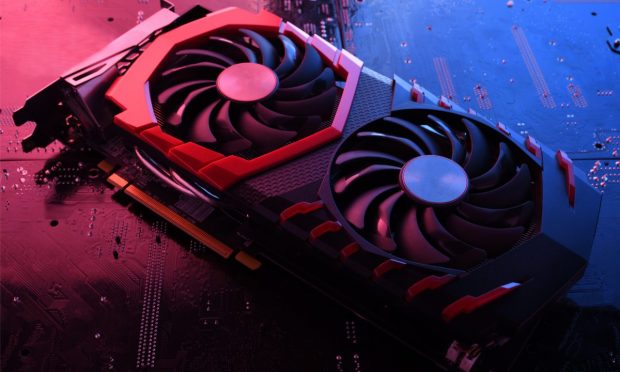Crypto Mining Market Pullback Hits Nvidia, Others

Gamers can afford to buy the top-of-the line graphics cards needed to play the most demanding titles like Cyberpunk 2077 and Far Cry 6 at their full potential.
And crypto miners and graphics cards makers are not happy.
Gamers and cryptocurrency miners were competing for a limited supply of graphics processing units (GPUs) made by Nvidia and AMD as far back as 2010, when early bitcoin miners discovered that GPUs were well-suited to the math puzzles they compete to solve first, in order to mint a new bitcoin block and receive a cache of bitcoin as a reward.
When the crypto bull market took off in mid-2020, the competition became a war, with Nvidia’s top-of-the-line GPUs so hard to find that speculators were selling $1,500 cards for two times the retail price or more on secondary markets like eBay. Miners bought more than $3 billion worth of GPUs since the beginning of 2021, Bloomberg reported on June 30.
Now, with crypto run down by bears and bitcoin back below its 2017 highs, Nvidia and other GPU makers are suffering a hangover as demand drops. Not only are the miners not buying, they’re dumping the cards they have on secondary markets and driving down prices. Crypto mining machines have a very brief lifespan before the giant mining farms that run thousands upon thousands of “miners” switch to the next generation. Those math puzzle are races, after all.
Worse — from Nvidia’s perspective — is that it is unlikely to ever again pick up with such fervor. That’s because with the exception of bitcoin, most of the new cryptocurrency blockchains don’t use GPUs anymore.
Not all crypto mining computers use GPUs, however. The best, and most expensive, are ASICS that use chips specifically designed for one blockchain and are not much good for anything else, while a miner running an Nvidia chip can use it to play Assassin’s Creed.
Long Run
That first run lasted about three years, but picked back up again in 2017, as bitcoin and a much larger array of alt-coins — other cryptocurrencies — went on the industry’s first big bull run, driving up prices as the value of bitcoin mined under the math-intensive and pollution-heavy proof-of-work (PoW) consensus mechanism that keeps blockchains secure shot from $900 to $19,000.
See also: Crypto Basics Series: What’s a Consensus Mechanism and Why Is It Destroying the Planet?
But PoW is so polluting — even with the crypto crash and miners pulling older mining computers, bitcoin uses more electricity than the Philippines — that the European Union came close to banning it during recent negotiations over the Markets in Crypto Assets (MiCA) regulatory bill.
Read more: EU Parliament Votes Against Crypto Mining Ban
As a result, the No. 2 blockchain, Ethereum, is switching over from its Iraq-sized PoW power drain to a newer and more popular consensus mechanism, proof-of-stake (PoS), which uses virtually no excess energy at all.
Nvidia’s share price fell 3% on Monday after Morgan Stanley warned of slower GPU sales due to the crypto slowdown. And in May, Nvidia was fined $5.5 million by the Securities and Exchange Commission for failing to disclose the impact crypto industry buyers had on GPU sales in past quarters.
Still, its revenue has grown 50% over each of the past two years, although that was due more to strong gaming and artificial intelligence (AI) datacenter sales, Bloomberg said.
Related: Ethereum Gets Closer to an Eco-Friendlier Version 2.0, but Next-Gen Scalability Still Delayed
What’s Next
Just because the mining gold rush seems to be over does not mean Nvidia’s revenues from the blockchain industry are necessarily over.
In January, the company entered the metaverse market, giving out free software to encourage development. It had been active in the space before, as most existing metaverses are basically massively multiplayer online (MMO) games like Fortnite or spaces like Roblox, which are considered part of the gaming market.
While most, including top blockchain-based metaverses Decentraland and The Sandbox, are fairly cartoonish, they aim for a much higher standard of graphics realism than even today’s top games.
Recently, Meta CEO Mark Zuckerberg showed off some of the 3D headsets the company is working on to make its vision of an immersive virtual reality come true. Goals range from vastly higher resolution to eye-tracking software to help make depth of vision more realistic.
Nvidia thinks it knows where it’s next blockchain-based payday is coming from.
Sign up here for daily updates on all of PYMNTS’ Crypto coverage.
